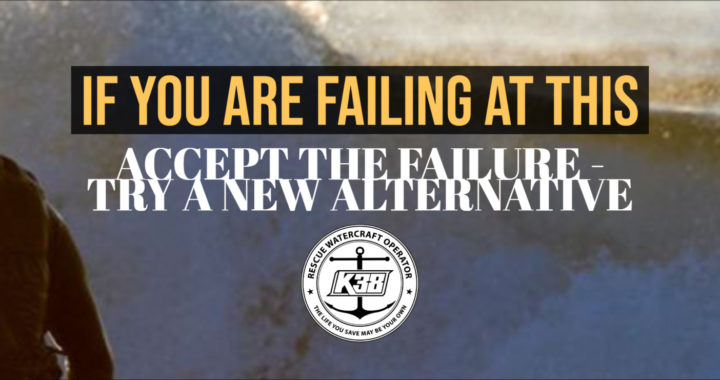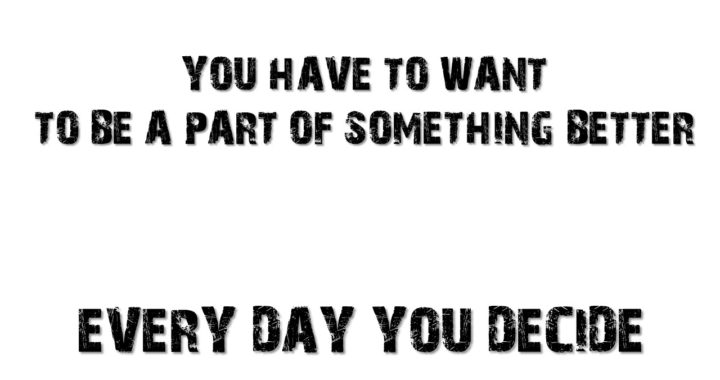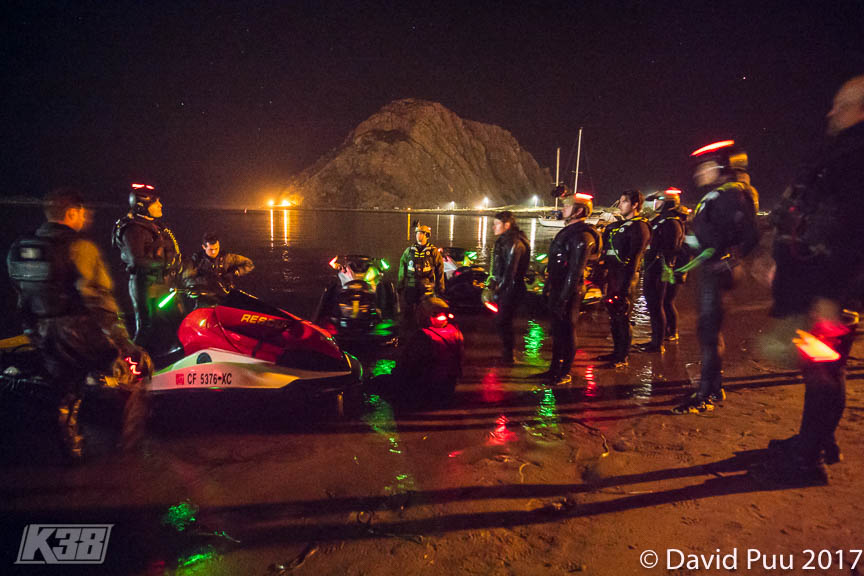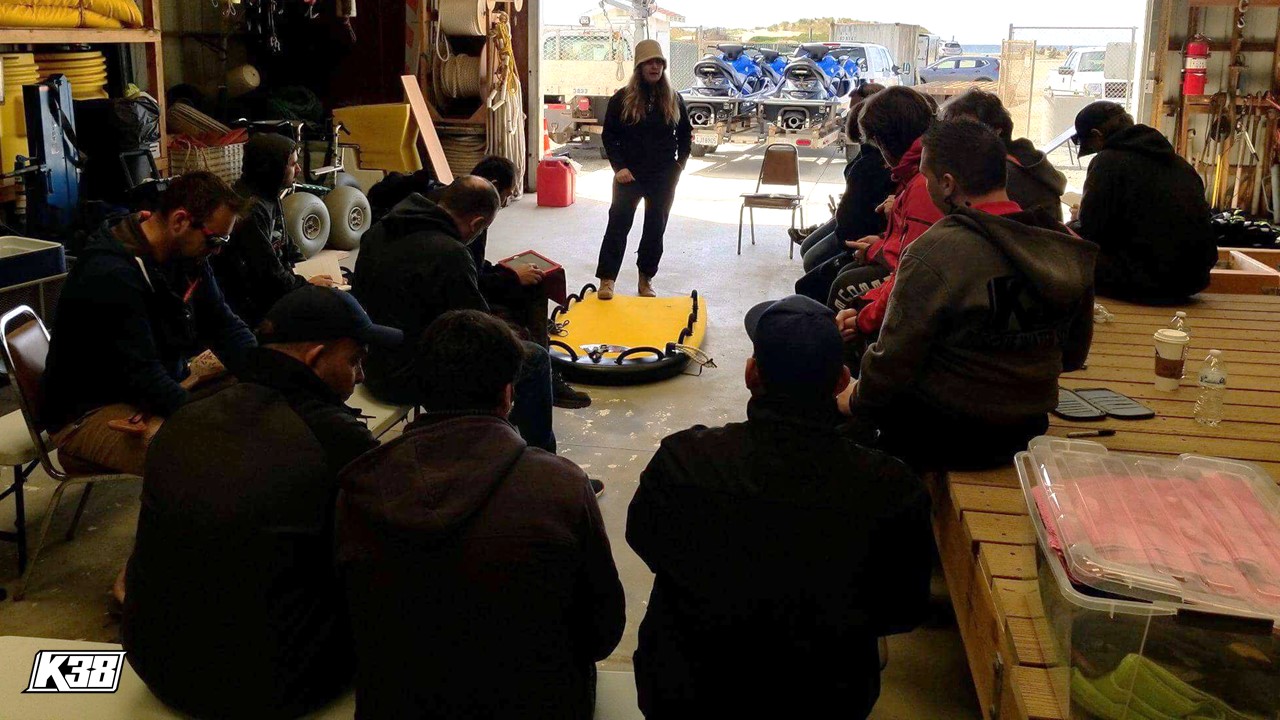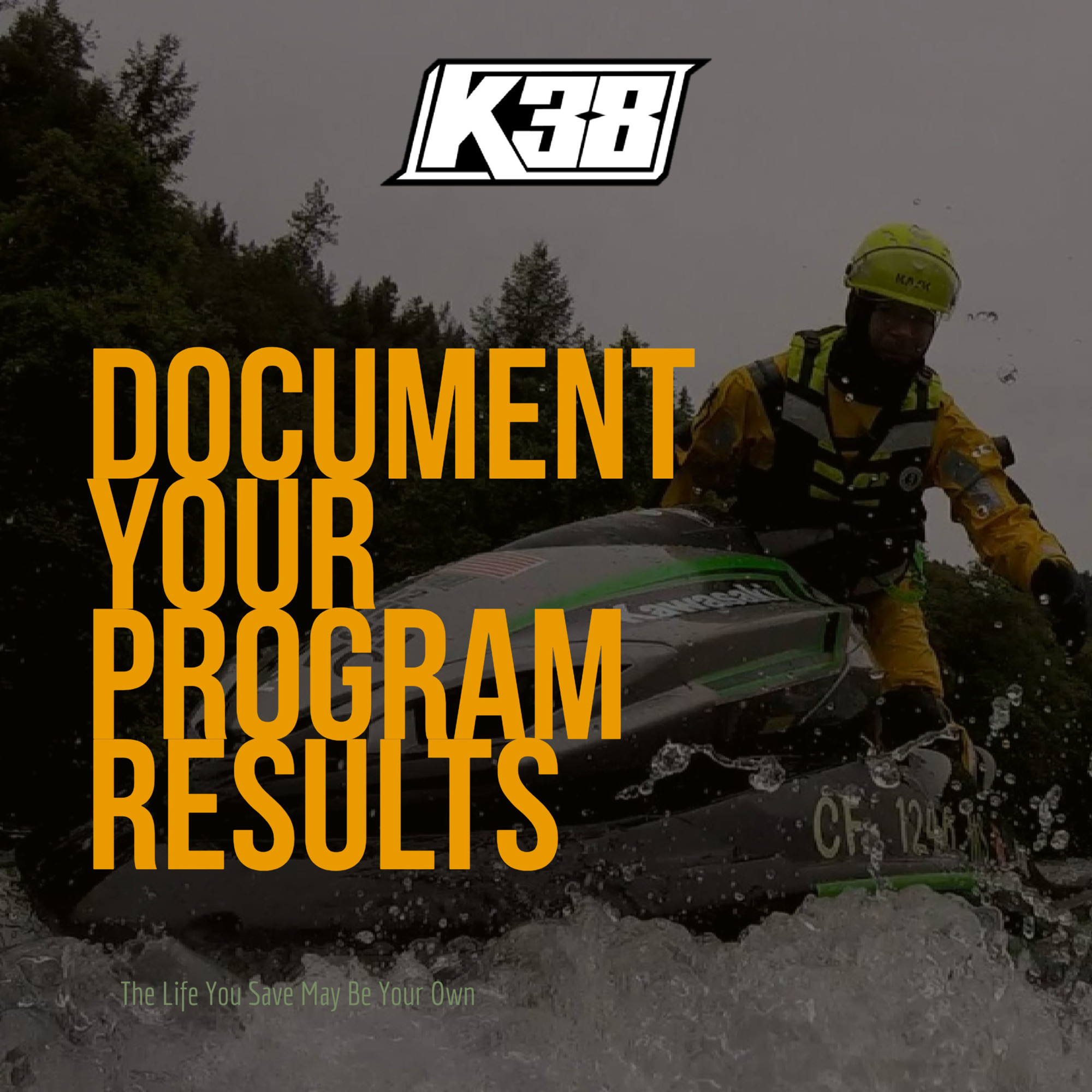DECISION
TSE TSO
As Rescue Water Craft Coxswains, leaders or instructors, our goal is not to cause harm.
This means our training program needs to be inspected, reviewed and careful consideration and care used to implement the best practices. PROGRAM EVALUATION
We need to set success through the measure of producing competency and program security along with training accordingly. And we need to enforce that like mad!
What is always relative? History is relative. We tend not to learn from history until it becomes our own.
So how do we incorporate the lessons they learned? We must study and we must listen!
Let us go back in time.
It is 1934. Tyrolean climbers Aschenbrenner and Schneider make an attempt summit at Nanga Parbat in the Himalayans.
This mountain is the 9th highest on Earth.
Six Sherpas lost their lives and their names do not stand out in history.
Ego and National pride carry as high a price as that we find in the Rescue Water Craft community. Be proud of accomplishments, but first be prepared to ensure their success.
Tse Tso is a saying ‘Long Life’ and Pasang Picture Sherpa saved his life through the determination of this mindset during a snowstorm. He was at high altitude when abandoned by his employers to fend for himself with 2 of his fellow Porters.
This action meant certain death on the mountain. He had a choice to make. Give up and surrender to fate or to take action. The problem he faced was he was not taught to lead and was not equipped to do so.
He decided at that moment to take the lead and endure into the unknown.
Let us not forget the hard lessons of all pioneers, survivors and the dead.
This is where ‘lessons learned’ comes into play and how we often ignored the warning signs. We could extract thousands of these incidents that any of us could determine our best route forward.
DO NOT DUPLICATE
The need for support staff was critical to success in mountaineering at this level. How we as humans treated one another then was reciprocal for the history of those times.
However, for us in 2019 we can revisit and learn from this tragedy. A significant cultural detraction was the ‘Sahibs’ did not train their ‘Porters’ to be climbers. They did not outfit them with appropriate climbing gear or enough caloric intake.
There was a disconnect between the two groups and the porters (Sherpas) suffered greatly for this.
Aschenbrenne and Schneider abandoned 3 Sherpas on a descent leaving them and speeding off on skis. Pasang Picture realized he would have to take the lead to bring down Nima Dorje and Pinzo Norbu to basecamp IV.
This was not exclusive to the German group in the formative years of climbing the Himalayas; many nations have gone to the Himalayans not respecting the capabilities of the Sherpas as climbers but simple carriers of equipment for logistical support. Budget with many events has placed safety in the back row for decades.
What is the parallel for today?
Do not think that your mechanic is not important to your RWC program. They are on that boat with you! If you are not able to tell effectively your mechanic what the problems are how can they make an efficient assessment and repair?
In 2019 for climbing change is championed from Nepalese climber Nirmal Purja, and partners Mingma David Sherpa and Gesman Tamang summited Everest of Project Possible:
Sherpas have climbed the Himalayas more than any other group in the world, but have lain mainly in the shadows of mountaineering history. Project Possible broke that barrier and shattered it.
Change is a struggle. We are not our great grandparents and we do not live in those times. We are in a time of great prosperity and reduction of poverty worldwide. We have opportunity and luxury. Anyone can be great if they put their mind to it and follow suit.
We have opportunity, ability to travel, and the incredible asset of using the internet to learn faster, unite with new Rescue Water Craft partners, use translation services to communicate and share content and inspiration.
We are witness to the rapid increase of a unique small power craft that I set out to revolutionize training worldwide. I did not know this alone. Thousands of people are the impetus of this success. The internet is making that happen for all of us. The obscurity of anonymity has passed.
I myself believe I am a guide for others as a Subject Matter Expert in the Personal Water Craft community. I am the voice for those who are behind the scenes, in our past history and guiding you to take the lead now and in the future.
I could have all the answers in the room, but if a water rescue mob doesn’t want that, we could revert back to a tragedy like the one in 1934 or any known Rescue Water Craft fatality.
Why is this? Not listening to the lessons learned of our forefathers and foremothers who pioneered the RWC capacity and averted disaster. We are still alive, striving for Tse Tso, nobody dies.
ONE IS NONE
In the early years of the 1970’s to the 80’s the Personal Water Craft water safety crew coined a few terms I will share with you:
1. A Moment for Safety will Save a Lifetime of Regret – ‘Brian Bendix’
2. Nobody Dies – USJSBA/IJSBA Course Marshals – ‘Brad Southworth, Ronny Kling, Steve Strickland, Willy’
These men paid attention and were not concerned about safety, they planned for it with strategy. They had much less then you do today for assets. You may not have been born in 1974, so learn to respect those who handed the baton into your lane.
The 1934 expedition is where Ang Tsering Sherpa and Pasang Painter Sherpa became mountaineers and were no longer just Porters. They became lifesavers.
Ask yourself this: How would you manage the death of your Crew while you were navigating on the water? What would you do next?
The names of the dead Sherpas are not mentioned in history like the leads and nations who funded those climbs.
The Germans did not share the details of what happened those 7 days of survival on the mountain. The Sherpa voices were private and reserved, their version reserved in the faded distance.
Many climbers died from decisions that were made before they stepped foot on the mountain. The same parallel happens in the Rescue Water Craft community. Some of this was economic, poor planning, bad weather or an incomplete team.
Likewise, Coxswains and Crew have died because their training was not secure for safety. How would you value their sacrifice?
The storm they encountered on Nanga Parbat that began on July 7, 1934 at the Silver Saddle shares with us valuable lessons of leadership, organization, training and what training produces; safety.
The vetting system of a Rescue Water Craft team is critical. The knowledge base and equipment must be reliant and the equipment ready for the field.
Many Rescue Water Craft programs have insufficient equipment and are ill prepared to succeed in 2019. Even though we began our Rescue Water Craft outreach in 1974 in the USA.
I have witnessed Rescue Water Craft programs where the Crew Members are treated as a second-class citizen. Sometimes they are referred to as ‘rescue swimmers’ but in our maritime culture they are Crew members. This is dangerous.
Why is it dangerous you may wonder? If a Rescue Water Craft Coxswain is injured, knocked off the RWC or has died, the Crew person must take their position and do so with competence.
And during the struggle they may need to recover or rescue their teammate or survivors in the water and finish the recovery to the end point of transfer.
Crew must possess the same skills and knowledge base as the Coxswain. This is a close quarter boat for persons on board, everyone is part of the stability or instability of the craft underway to some extent.
Those not in the lead may not give credit to those in the flanks.
1. Prepare an effective vetting program for all participants, ensure their physical and mental strength is adequate
2. Monitor Weather and water conditions underway
3. Prepare properly Personal Protective Equipment
4. Inspect and maintain the vessel according to the manufacturer specifications
5. Train like your life and others depend upon it
6. Assess and remedy any necessary corrections that are discovered
7. Investigate mishaps and revise training or program management immediately
8. Clearly define your area of operation, seasonally, daily or with disasters in mind. Set limits.
9. Proper budget needed to maintain a marine unit
A Rescue Water Craft is a boat. It is not a cheap excuse to rescue or a shortcut.
It is not an inexpensive boat. It is a high-performance craft that requires proper funds, professional maintenance (monthly and annual) necessary to maintain a sufficient program for each craft.
If you or your organization is not treating your RWC program like a boat marine unit, close it down immediately. Do not proceed! Get off the boat and restructure your maritime program.
That mountain is waiting for the storm to show you where your problems are and it may very well take life. At that point you cannot afford the program you should have put in place before tragedy strikes.
My friend Lee Selman sent me this book ‘Tigers of the Snow’, written by Jonathan Neale.
The perspective of culture, lifesaving and information is a must read.
You will discover how the narrative of truth can become a Long Life (Tse Tso), or lead to certain death by personal volition.
We choose. Choose this book and gain insight into training, communication, planning and strategy and why it must be purposeful:
While you are at it, look up the history of the Sherpas and their contributions. We honor those pioneers and preserve their history. All lifesavers are unique souls who would give their life for others. This crosses all disciplines and mediums, earth, sky or water.
Things are getting better. People are humbling themselves to address the problems they have occurred. These assessments are working. Encourage one another to continue to foster developing our Rescue Water Craft culture.
Do not remain silent when a mishap occurs, dig in, expose the problems and save the life of yourself or a teammate.
That is the answer.
__________________
Posted: August 13, 2019
Content Creator of Rescue Water Craft and Personal Water Craft boating international education standards: Shawn Alladio is the world’s foremost authority and leading subject matter expert. She cares most about her community and the culture surrounding the safety of event service providers and Rescue Water Craft operators, working hard and dedicated towards protecting their reputation, distributing safety information and continuing to train these amazing individuals to the highest standards of care.
__________
Have any questions? Join the Rescue Water Craft Association
and discover what your community is doing to modernize standards, safety and reduce liability!
Join the Rescue Water Craft Association
Use at your own risk. Please take a qualified Rescue Water Craft training course and maintain proper records and respect all the PWC, RWC, PPE, and gear OEM manufacturer warning labels and cautions.
